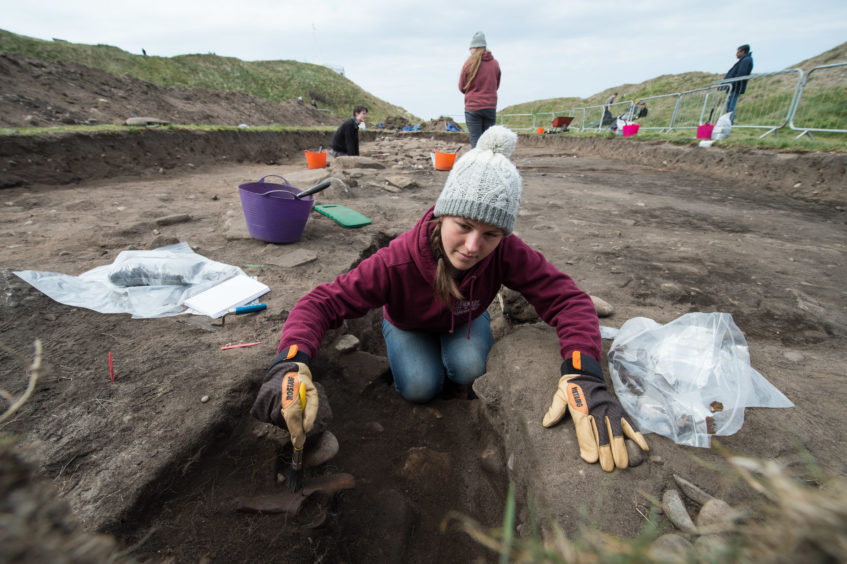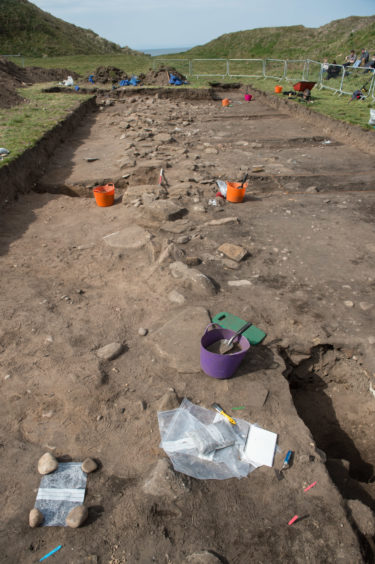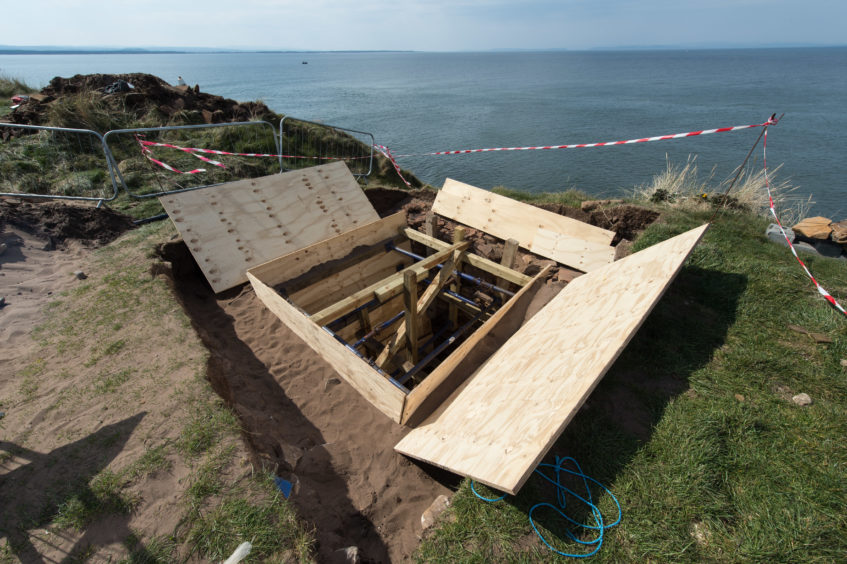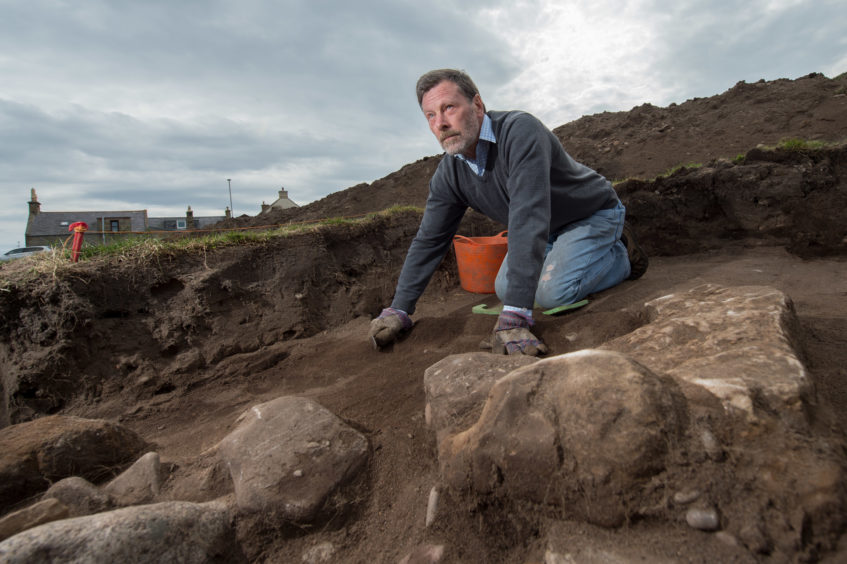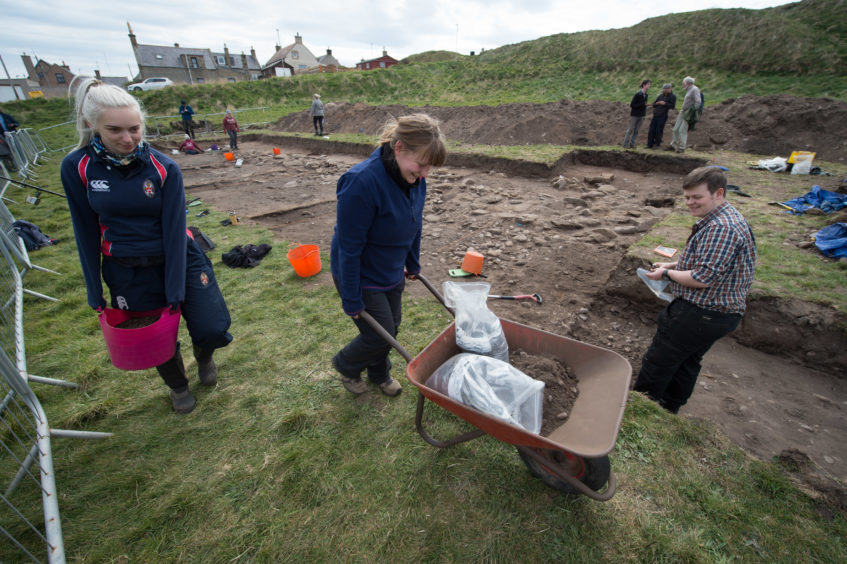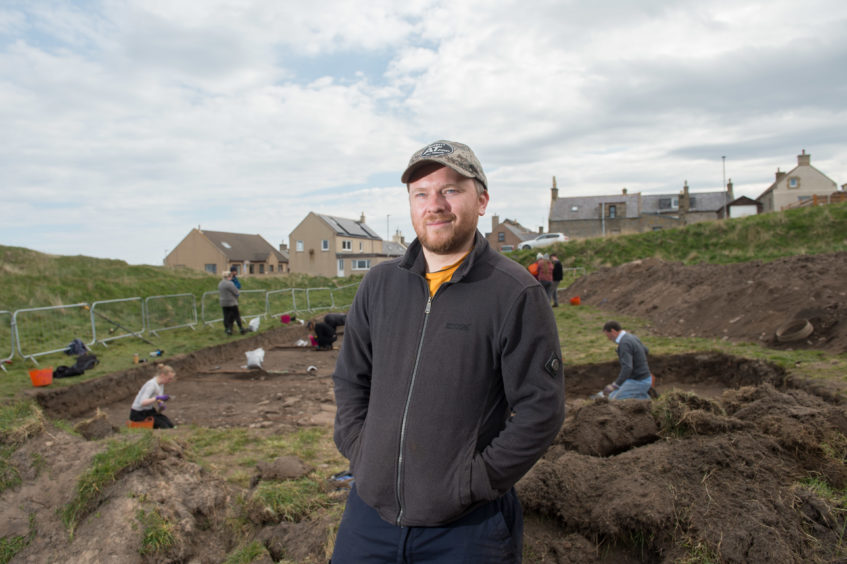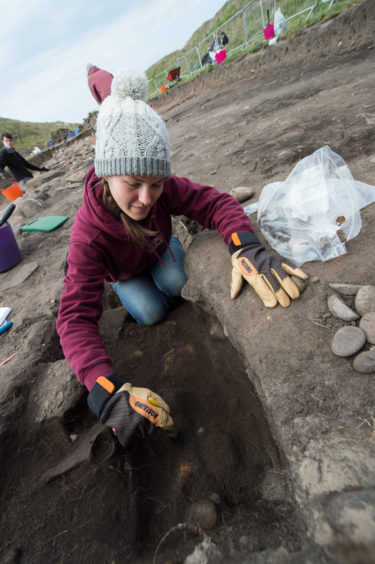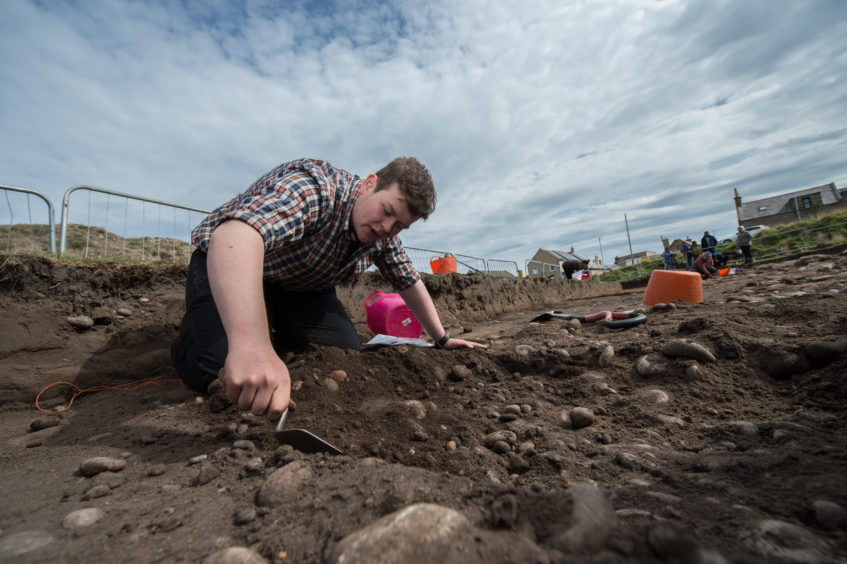The walls of a Pictish place of power have been unearthed from the soil of the north-east.
Nearly ten feet long, the defensive ramparts once surrounded a village and stronghold on headland at Burghead.
Archaeologists from Aberdeen University have been visiting the Moray Firth site for regular digs since 2015.
But only now, with the shroud of earth and rubble removed, has the full extent of the fort been revealed.
>> Keep up to date with the latest news with The P&J newsletter
Yesterday, the archaeologists revealed the current excavation has pulled back years of earth and rubble to uncover long-lost timber frames that were used to those who once lived there.
It is believed the fort in the village was a significant seat of power at the time.
Estimates from studies undertaken in the 1970s had dated the ruins to between the 4th and 11th Centuries.
But Aberdeen University’s head of archaeology, Gordon Noble, who is leading the project, said the current dig had used more sophisticated technology to date the ruins more accurately as 8th Century – and firmly in the Pictish period.
He said: “We’ve looked at buildings and structures here before. This time we’ve been trying to date the ramparts of the fort itself.
“We’ve been digging up against the wall faces and found almost 10 feet of the original wall still standing.
“It’s very impressive. Probably one of the best preserved ramparts of this type.”
The fort is thought to have been reduced to a ruin by fire in the 10th Century at a time when Vikings were known to be raiding the Moray Firth coastline.
It was feared that the ancient ruins of the fort had then been destroyed during the 19th Century due to the expansion of Burghead.
Digs in recent years have, however, uncovered more remains than it was ever thought had survived.
Other finds, including coins, pottery and carvings, have also been made within the walls.
The two-week dig, which is being undertaken by a 15-strong team made up of volunteers and students, will finish tomorrow, with further excavations expected to be undertaken next year.
Mr Noble added: “The date estimates we have had before come from the 1970s and have really big margins of error.
“We’ve now been able to place it firmly in the Pictish period.”
